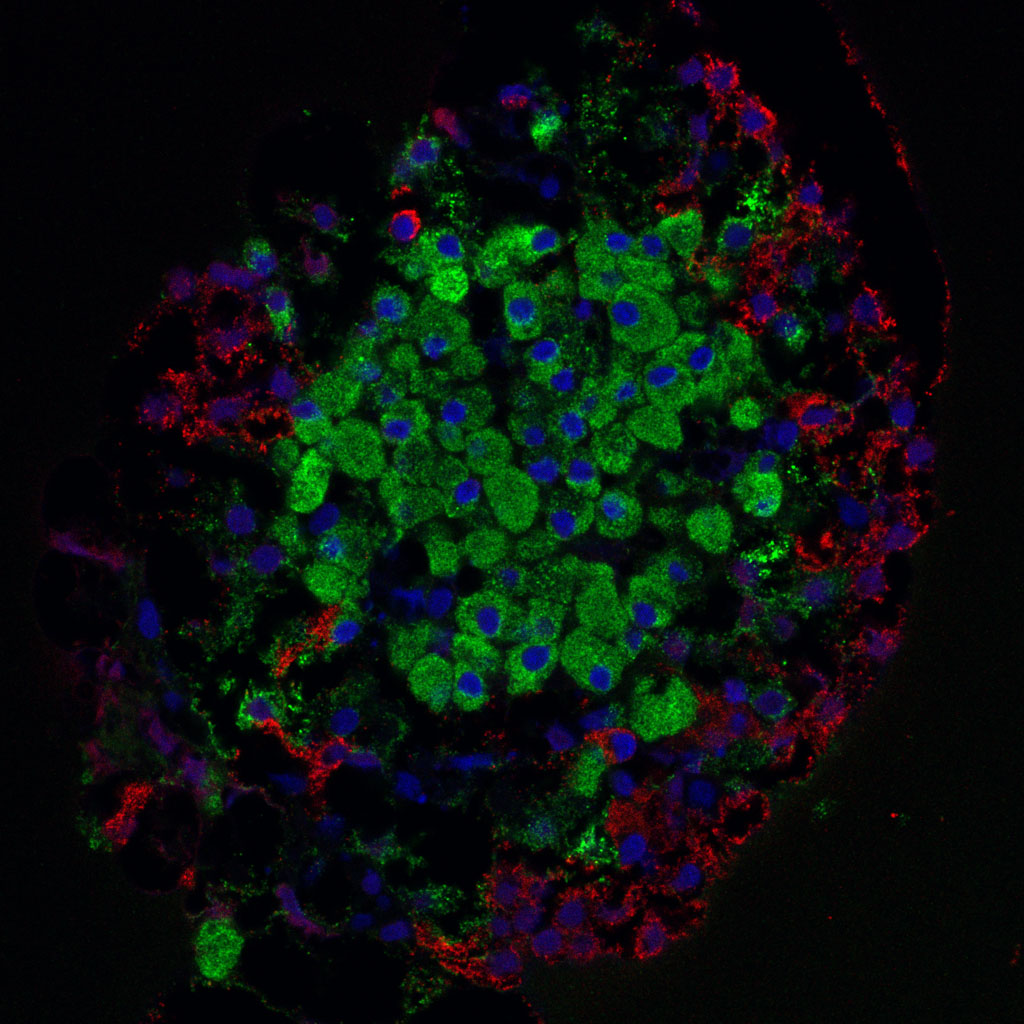This topic takes on average 55 minutes to read.
There are a number of interactive features in this resource:
 Human biology
Human biology
 Biology
Biology
 PSHE / Citizenship studies
PSHE / Citizenship studies
The pancreas has two functions: to make hormones (endocrine) and to produce enzymes for digestion (exocrine).
The islets of Langerhans make the hormones insulin and glucagon. They make up only just over 2% of the pancreatic tissue.

Alpha and beta cells in the islets of Langerhans. The alpha cells (stained red) make the glucagon and the beta cells (stained green) produce insulin. Nuclei are stained blue. Source: Masur
Beta cells are specialised to produce insulin. They have a well-developed rough endoplasmic reticulum, to produce the protein hormone. This is then stored in cytoplasmic vesicles before it is secreted. The process requires energy and beta cells contain many mitochondria to provide ATP.
Roll over the image to see the parts of the cell involved in insulin production.
Insulin is a protein and there are several stages in its production. The animation shows the process of protein synthesis. When insulin is being produced, it is the insulin gene in the nucleus that is transcribed into messenger RNA.